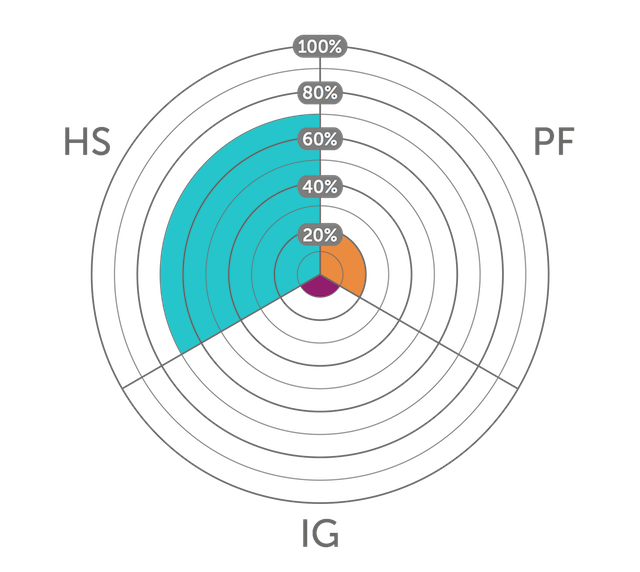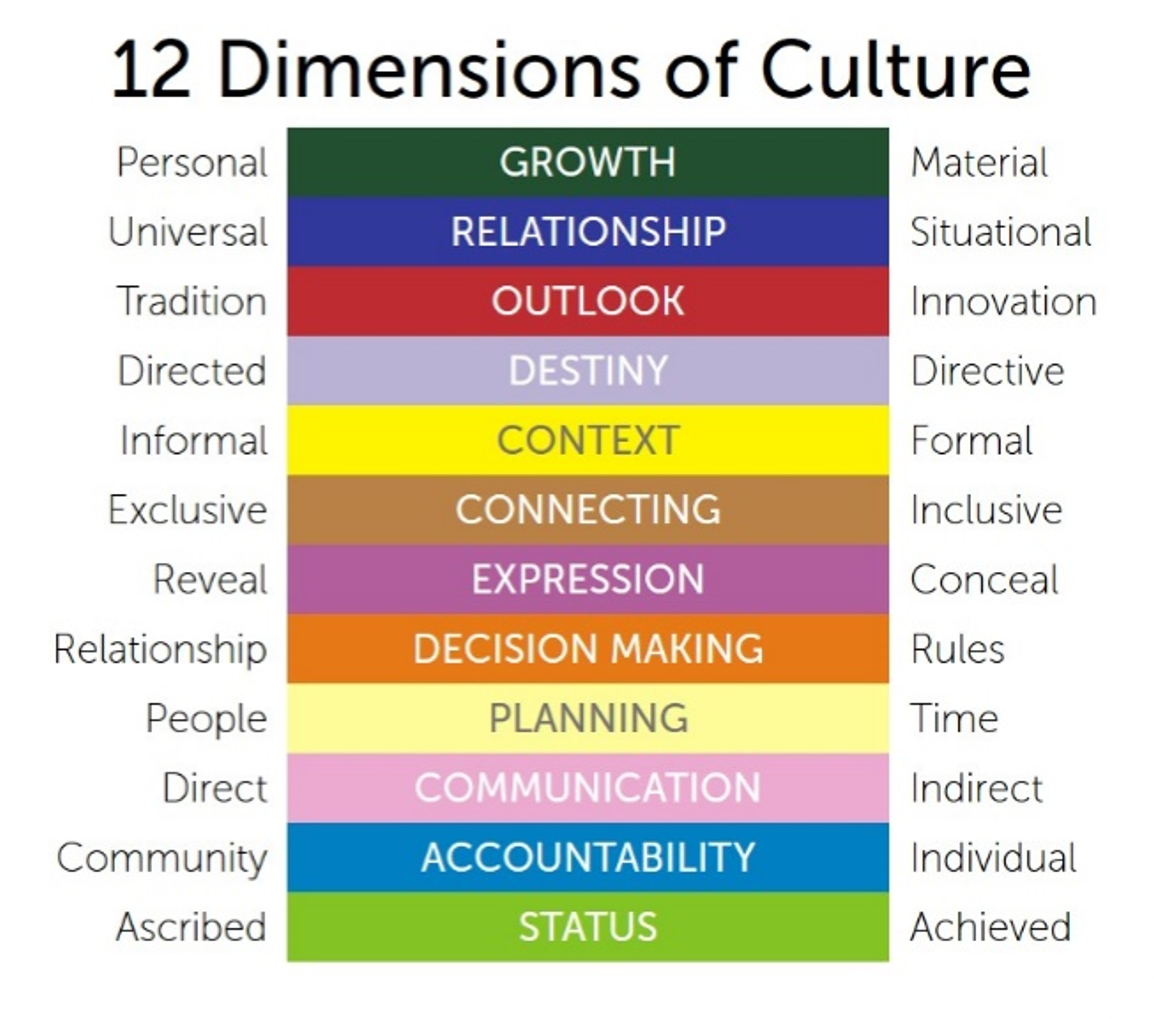Have you ever been stunned by the bluntness of a colleague? Or only after a project falls apart, realized your boss's vague hints were meant to help you see major problems with your work?
There is a good chance you’ve been impacted by the difference between Direct and Indirect communication styles. These are the poles of the Communication dimension, the tenth of the 12 Dimensions of Culture. In this email we’ll examine some of the ways Communication relates to performance management, customer service and corporate branding.
Direct vs. Indirect Communication
In an indirect communication environment the message is typically delivered through a third person approach, either literally via another person, or in a third-person “style” through a story or parable. You would say to somebody, "You know, I heard my friend tell this story once…" and then share a story that subtly reprimands the person you had an issue with. In successful communication, the listener would understand or strongly suspect that the story is really about them and that they need to get their act together. This is a very common way of communicating in most of the world; from Latin America, Africa, the Middle East, and Asia, to the Mediterranean Basin. Indirect communication is probably the most common of the two styles across the world.
The intent is often not so much ‘saying what I mean and meaning what I say’ but keeping the honor of the other person intact while delivering the message. People in this environment will find ways to say no, but subtly and often without using the word “no” or an equivalent. This means a person who communicates directly may not understand the answer that was given, though it may be perfectly clear to other indirect communicators.
In a direct communication environment the message is typically delivered in the first-person without any narrative mechanisms to soften the blow. Consider the following example:
"Steve, I want to talk with you. I don't think your response yesterday was appropriate. Ellis would be much happier if you simply apologized for being late instead of making excuses."
In the eyes of people who have adopted an indirect style of communicating, this might come across as confrontational and inconsiderate.

The Effect of Communication on Performance Management
Direct and indirect communication styles have a huge impact on things like performance management. Communication is not ultimately about the message that’s sent, but the message that’s received. For a performance management system to work, your staff must understand the messages you send in ways that will impact their performance. However, performance management systems do not always match up well with where individual staff members stand in the dimension of Communication.
People with indirect-communication styles will often understand far more than a direct-communication style boss meant to say, because a large portion of the message is always assumed to be implicit rather than explicit. In a performance evaluation setting this basic misunderstanding can lead to high stress, lower job satisfaction, lower performance and higher turnover.
Likewise, people with a direct-communication style expect little or no implicit information in the message, so they will often read much less into the message than the indirect-communicator intended. In a performance management environment, this can lead to an employee not recognizing negative feedback. This leads to frustration on the part of the employer, and may lead to termination of an employee, because the direct-communicator did not understand enough to change his or her behavior.

Before you can adapt performance management policies appropriately you must get a feeling for your environment. We recommend familiarizing yourself with the Three Colors of Worldview - another of KnowledgeWorkx’ core intercultural maps. One of the phrases often used in an Innocence/Guilt, direct communication environment is, "This is not about you, it’s about something you did." But that distinction is much harder to make in an Honor/Shame or Power/Fear culture. People cannot be separated from what they do. People in such cultures tend to be more indirect communicators.
Customer Service and Corporate Branding
In Customer Service, direct and indirect communication styles show up especially when dealing with customers that have had a negative experience. The customer might expect a more indirect communication approach, while the direct communication customer service person might not appreciate that approach at all, and could even end up alienating the client even more.
Recent research projects have shown the vast majority of unhappy customers don’t complain about bad service or negative experiences. If on top of that you have an indirect communication culture, people can be misunderstood even when they want to complain. With general questions like “How was your stay?” direct communication customer service members can miss telltale signs of displeasure that might influence a person coming back again. A more inviting way to ask the same question is “If you were to come again, what would you like to see improve in the food service?” This is an area where missing an opportunity to hear what a customer wants to tell you may be the difference in retaining them.
In the area of Corporate Branding, when a product is not performing or has a side-effect that was not anticipated, the way the issue is handled depends heavily on the communication culture of the company. Indirect communication cultures might have a tendency to not address the issue at all, while in direct-communication cultures the company would likely be transparent about the issue for the purpose of maintaining their public credibility.
In indirect communication cultures the use of storytelling is generally much more developed than in direct cultures. However, brand development through storytelling is being re-discovered in the States. Some CEOs in the States now travel with a journalist, so that if the CEO has an experience the journalist is there to capture the story for later use. There is a whole new wave of executives learning to tell stories, and using stories in advertising. Many times the story has nothing to do with the product itself. Instead you’re connecting a product with things like adventure and diversity, so that when people think about those things they will also think of your brand. Story-telling is about creating rich imagery and emotional experiences.
There are many ways in which this dimension shows up. It’s important not only to be aware of the Communication orientation of people in your environment, but also what messaging styles work best for different occasions.
* Original from KnowledgeWorkx
- Log in to post comments






